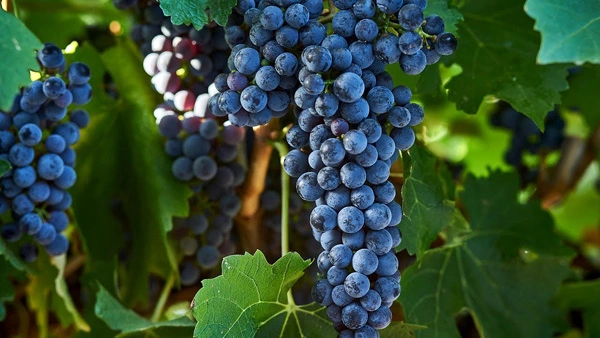Cabernet Sauvignon is the second most common grape variety (after Merlot). It originates from France, but this technical variety, from which high-quality wines are made, is grown almost all over the world. “Cabernet Franc” and “Sauvignon Blanc” merged into one variety in the 17th century (for a long time it was considered accidental), for centuries occupying a leading position in winemaking.
“Cabernet Sauvignon” is quite unpretentious grapes, adapts to different climatic conditions (particularly suitable for temperate climate). Resistant to relatively low temperatures, resistant to fungal and other diseases, pests (not afraid of mildew, gray rot, phylloxera, but vulnerable to powdery mildew, virtually undamaged by grape leaves, and susceptible to spider mites), withstands drought. But it bears fruit better with enough moisture. Responds well to the use of agricultural machinery, including harvesters.
General characteristics of Cabernet Sauvignon grapes
Bunches are small (average 100 g), round berries, medium size, with solanaceous taste, hard skin, abundantly covered with natural wax (the basis of fermentation). Grapes ripen late – late September – early October. Can be stored for a long time in the bushes, almost never cracks or rots, even in prolonged rains. Used mostly for making beverages – juices and high quality wines with a tart taste. For dry wines, the earlier grapes are harvested, the later one is more suitable for desserts.
Growing Cabernet Sauvignon
Cabernet Sauvignon is planted in the spring in sunny bright warm places.
The variety is not very demanding to the soil, but grows best on loose, well-drained soils. But it can also adapt to rocky, hard ground.
Pits 60-100 cm deep are filled with drainage (25 cm), soil mixture (garden soil, peat, sand and humus), seedlings are tied to a support, abundantly watered.
In the first year after planting the plant is not pruned, and the following fall and later – every year. With rapid growth, the branches are pinched.
Cabernet Sauvignon grapes need constant nourishment. In spring they add mineral fertilizers, in autumn the soil is mulched. Regularly sprayed against powdery mildew and spider mites.
In winter, the vine is bent to the ground and covered. Although not required, Cabernet Sauvignon can withstand temperatures down to -27 degrees.

